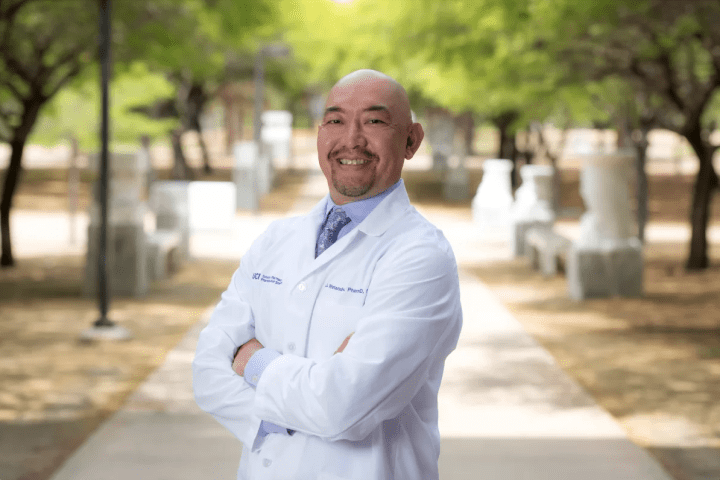UC Irvine study reveals surge in use of weight loss-linked drugs in California health system
Access, supply and cost issues for GLP-1 agonists must be addressed as more growth projected

Irvine, Calif., Oct. 19, 2023 — In a first-of-its-kind study, researchers from the University of California, Irvine have discovered an extraordinary surge in the utilization of weight loss-associated GLP-1 receptor agonists, a class of medications commonly used in the treatment of Type 2 diabetes and obesity, that is poised to accelerate, based on emerging clinical evidence. A GLP-1 agonist is a drug that activates certain receptors in the brain and pancreas.
Findings recently published online in the Journal of the American Pharmacists Association are based on a longitudinal cohort study of patients in the University of California Health Data Warehouse who were prescribed Adlyxin, Byetta, Mounjaro, Ozempic, Rybelsus, Saxenda, Victoza, Trulicity or Wegovy GLP-1 products between 2014 and 2022. The results demonstrated rapidly increased usage that’s expected to continue exponentially.
Understanding the impact of this substantial shift in utilization patterns is crucial for informed decision-making by healthcare providers, ensuring supply stability for patients who rely on these medications, and assessing the economics of the insurance companies that cover the cost of these drugs.
“Before now, there hasn’t been much information available on patient-level, longitudinal use patterns, and the recent FDA approval of GLP-1 RAs linked to substantial weight loss has generated great interest in demand projections,” said Jonathan Watanabe, lead author of the study and UCI professor of clinical pharmacy. “The results from our study of a large, diverse, statewide health system population promise to reshape the conversation around weight loss-associated GLP-1 RAs, informing healthcare stakeholders, policymakers, legislators, providers and patients alike.”
The study sample comprised 87,935 people, of whom 47.6 percent were white, 22.4 percent were Hispanic, 7.9 percent were Asian, and 5.7 percent were Black. The mean age was 59.2 years, and 55.5 percent were female. Growth rates were estimated according to log-linear regression model analysis.
Between 2014 and 2018, only Trulicity and Victoza exceeded 5,000 annual users. Between 2018 and 2022, when Ozempic was introduced, GLP-1 RA utilization experienced rapid acceleration. By 2022, Ozempic and Trulicity had become the most popular, at 22,891 and 19,663 patients, respectively, while usage had grown to 5,937 for Rybelsus, 2,992 for Wegovy, 2,721 for Saxenda and 1,508 for Mounjaro. Victoza had dipped to 4,157 users, and Byetta and Adlyxin use was limited throughout the study period.
“This study also highlights that distinct FDA-approved uses for either diabetes or weight loss require that the priorities of patient population medical needs must be balanced,” Watanabe said. “For example, Ozempic is approved for diabetes, which is much more likely to be medically managed than being overweight. Wegovy and Ozempic are both semaglutide injections, but Wegovy is FDA-approved for weight management rather than diabetes, which impacts its use.”
The UCI research team also included Jimmy Kwon, a graduate student in UCI’s Donald Bren School of Information and Computer Sciences and the UCI Center for Data-Driven Drugs Research and Policy; Bin Nan, Chancellor’s Professor of statistics; and Dr. Andrew Reikes, clinical professor of medicine. The next steps will focus on expanding population-level research on use and access.
This work was partially supported by an unrestricted fund from the California Health Benefits Review Program.
About UCI’s Brilliant Future campaign: Publicly launched on Oct. 4, 2019, the Brilliant Future campaign aims to raise awareness and support for UCI. By engaging 75,000 alumni and garnering $2 billion in philanthropic investment, UCI seeks to reach new heights of excellence in student success, health and wellness, research and more. The School of Pharmacy & Pharmaceutical Sciences plays a vital role in the success of the campaign. Learn more by visiting https://brilliantfuture.uci.edu/school-of-pharmacy-and-pharmaceutical-sciences.
About the University of California, Irvine: Founded in 1965, UCI is a member of the prestigious Association of American Universities and is ranked among the nation’s top 10 public universities by U.S. News & World Report. The campus has produced five Nobel laureates and is known for its academic achievement, premier research, innovation and anteater mascot. Led by Chancellor Howard Gillman, UCI has more than 36,000 students and offers 224 degree programs. It’s located in one of the world’s safest and most economically vibrant communities and is Orange County’s second-largest employer, contributing $7 billion annually to the local economy and $8 billion statewide. For more on UCI, visit www.uci.edu.
Media access: Radio programs/stations may, for a fee, use an on-campus ISDN line to interview UCI faculty and experts, subject to availability and university approval. For more UCI news, visit news.uci.edu. Additional resources for journalists may be found at communications.uci.edu/for-journalists.